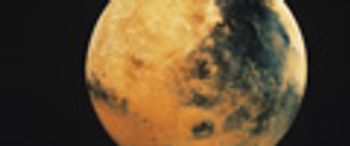Articles by Barry E. DiGregorio

Since the discovery of gullies on Mars in 2000, NASA has endeavored to re-image areas known to have them. Now for the first time, using before and after images taken of the same region on Mars, a dune gully flow is shown to have happened very recently.

The European-built Huygens probe made history on January 14 by becoming the first spacecraft to land on Saturn's largest moon. The Huygens gas chromatography–mass spectrometry team concluded that methane rain occurs on the moon, and GC–MS can distinguish between two isotopic forms of carbon — carbon-12 and carbon-13. By comparing the carbon-12/13 ratios it might be possible to pin a biological source to the methane arising from the interior of Titan.

The author discusses an instrument called SEARCH (Scan for Extinct Astrobiological Residues and Current Habitats) designed for use on NASA Mars rover missions.

The University of Leicester?s Space Research Centre has begun to assemble a database for use by all planetary scientists and engineers in the analysis of rocky planets, moons, and asteroids.

Two orbiting spacecraft are already gathering information about Mars, and another orbiter and three surface landers are ready for launch ? all this in a year when the red planet will be closer to Earth than it has been since prehistoric times.

After nearly three decades and three spacecaft landings on the surface of Mars, we still do not know what the rocks are made of . . .

The author discusses how gas chromatography?mass spectrometry will help to characterize the atmosphere and surface of Titan, Saturn's largest moon.





